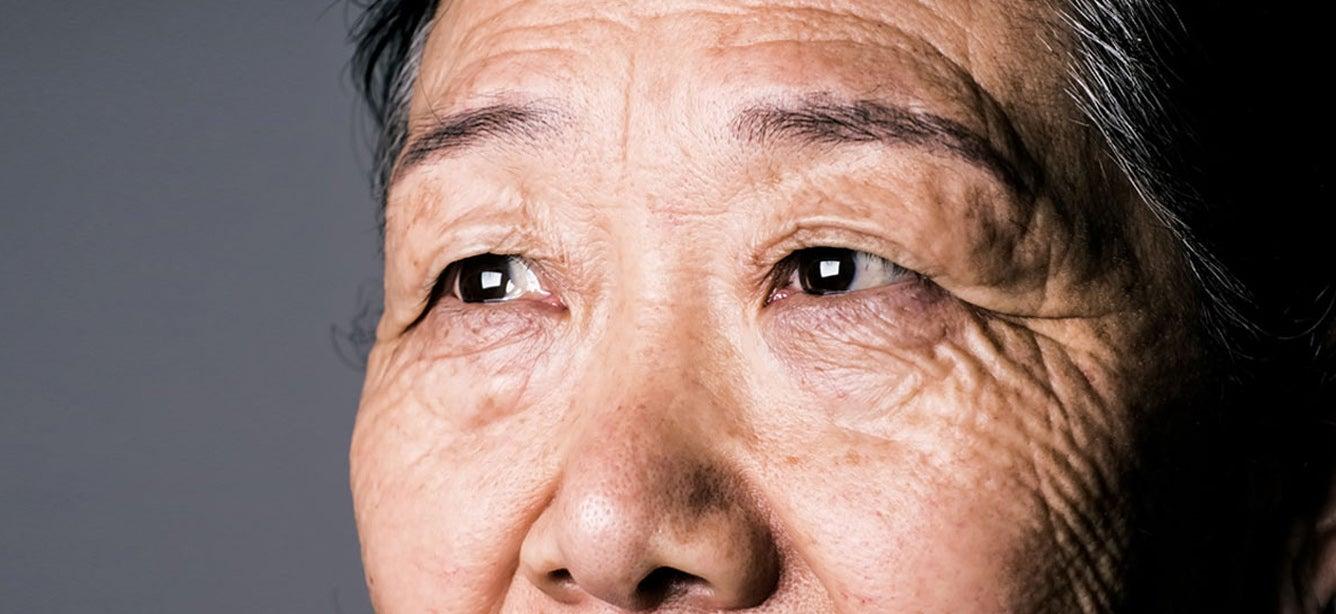
With people in the U.S. aging better and living longer, older adults are one of the fastest-growing groups in the country. In fact, by 2030, all Baby Boomers will be age 65+ and by 2040 roughly 78.3 million Americans will fall within that age group.1
Using new insights from the ACL’s 2023 Profile of Older Americans and other sources, we’ve painted an eye-opening portrait of our nation’s older adults including key trends, challenges, and disparities.
Older adult demographics at a glance
- There were 57.8 million adults age 65+ living in the U.S. in 2022. This included 31.9 million women and 25.9 million men.
- One-quarter (25%) of adults age 65+ were from racially and ethnic minority communities in 2022.
- Maine, Florida, West Virginia, and Vermont had the highest percentage of populations age 65+ in 2022.
- There were 88,988 people age 100 and older in 2022—more than double the number in 1980 (32,194).
- Among adults age 65+ in 2023, 59% lived with their spouse or partner, while roughly 28% lived alone.
- The 2022 median income of older adults was $29,740.1
Health of older adults
Today's older Americans are healthier overall and living independently for longer. In 2022, the average 65-year-old was expected to live another 18.9 years.2
But most older people have at least one chronic health condition, and many are dealing with multiple health issues. Data from 2022 revealed the following about leading chronic conditions:
- Heart disease remains the number one cause of death for all Americans, affecting people of all ages, but especially those age 75+ (24.1%).3
- Arthritis was common among 44% of 65- to 74-year-olds, and 53.9% of those age 75+.4
- 20.1% of adults age 65+ had been diagnosed with diabetes.5
- Obesity was also a significant cause for concern. Nearly 42% of older Americans age 60+ were considered obese in 2022.6
Poverty among older adults
Economic insecurity is a pressing issue for older adults. Among Americans age 65+, 10.2% (or 5.9 million people) lived below the official poverty line in 2022, with 14.1% meeting the definition under the Supplemental Poverty Measure, according to the latest U.S. Census Bureau data.7
Against the backdrop of rising inflation, older Americans are struggling with higher costs related to housing, utilities, groceries, and health care. Many also face diminished savings and job loss. Even for older adults who are making ends meet, a single health or other emergency can quickly tip the financial scales.
Some key facts on poverty among older adults:
- Of older adults who reported any income in 2022, 10% earned less than $10,000.1
- Older women of color face greater rates of poverty than any other group. Nearly 1 in 5 Latina and Black women over age 65+ live in poverty, which is double the rate for white women and nearly triple the rate for white men.8
- Older adults living alone are especially vulnerable, with 17.7% living in poverty versus 6.6% living with families. The rates were particularly high for Asian-American women living alone (37%).1
Older populations and hunger
Poverty and hunger go hand in hand, and too many older adults don’t have enough to eat. According to the USDA Food and Nutrition Service, in 2022, 9.1% of all households with an older adult were food insecure, with a higher rate (11.4%) seen among those age 65+ living alone.9 Consider these other facts on older adults and hunger:
- Hunger has a profound impact on older adults’ health and nutrition, increasing their risk for diabetes, depression, and asthma.10
- Older adults living with disability have nearly triple the rate of food insecurity as their peers without disability.10
- In FY2022, the Supplemental Nutrition Assistance Program (SNAP) served 6.5 million households with an older adult.7 But millions more remain unenrolled in the benefit, which means many people are missing out on vital assistance.11
Older adults in the workforce
Many mature adults continue to work well into retirement, whether it's out of financial necessity or personal preference. Working for longer can help older people stay physically active and mentally sharp while maintaining important social connections. Employers stand to benefit from an older workforce as well. Seasoned workers bring knowledge, experience, and reliability that can’t always be matched by their younger counterparts.
Some fast facts about older Americans and employment:
- In 2023, 11.2 million Americans age 65+ were working or proactively seeking employment.1
- Women represent 46% of all older workers.12
- Older workers report being more satisfied with their jobs than younger workers.12
- According to the Bureau of Labor Statistics, 9.5% of the civilian labor force is expected to be older than 65 by the year 2030.13
Who is caring for older adults?
Family caregivers play a large role in the care of older adults, with many of them also juggling a job, children, and other responsibilities. In 2021-22, 37.1 million family caregivers provided unpaid care to a family or non-family member age 65+.1
Older Americans are on the other side of caregiving as well. In 2022, 1.1 million grandparents (age 60+) were largely responsible for the care of grandchildren under age 18 that lived with them. In 2019, among the 5.37 million people with intellectual and developmental disabilities living with a family caregiver, 24% had caregivers who were age 60+.1
NCOA's role in improving the lives of older adults
The National Council on Aging (NCOA) is the national voice for every person’s right to age well. We’re on a path to improve the lives of 40 million older adults by 2030. We will accomplish this by:
- Advocating for public policy change that supports all older adults, particularly those who are struggling, as well as the caregivers and community organizations that serve them.
- Empowering older adults to take charge of their own well-being by practicing falls prevention, chronic disease self-management, and mental health and wellness strategies.
- Connecting older Americans with quality health care services that meet their needs, including affordable prescription drugs, dental care, and long-term services and supports.
- Promoting awareness of and access to tools, resources, and knowledge that help all older adults age with dignity. This includes money-saving benefits, creating a job skills plan, job training, and money management tips.
Sources
1. U.S. Administration for Community Living. 2023 Profile of Older Americans. May 2024. Found on the internet at https://acl.gov/sites/default/files/Profile%20of%20OA/ACL_ProfileOlderAmericans2023_508.pdf
2. National Center for Health Statistics. Mortality in the United States, 2023. December 2024. Found on the internet at https://www.cdc.gov/nchs/products/databriefs/db521.htm
3. National Center for Health Statistics. Heart Disease Prevalence. Found on the internet at https://www.cdc.gov/nchs/hus/topics/heart-disease-prevalence.htm
4. National Center for Health Statistics. Arthritis in Adults Age 18 and Older: United States, 2022. February 2024. Found on the internet at https://www.cdc.gov/nchs/products/databriefs/db497.htm
5. National Center for Health Statistics. QuickStats: Percentage of Adults Aged ≥18 Years with Diagnosed Diabetes, by Urbanization Level and Age Group — National Health Interview Survey, United States, 2022. January 19, 2024. Found on the internet at https://blogs.cdc.gov/nchs/2024/01/19/7534/
6. CDC. Adult Obesity Facts. Found on the internet at https://www.cdc.gov/obesity/php/data-research/adult-obesity-facts.html
7. U.S. Census. Poverty in the United States: 2022. September 12, 2023. Found on the internet at https://www.census.gov/library/publications/2023/demo/p60-280.html
8. Justice in Aging. The Economic Security and Health of Older Women of Color. June 2023. Found on the internet at https://justiceinaging.org/wp-content/uploads/2023/07/The-Economic-Security-and-Health-of-Older-Women-of-Color-IssueBrief-FINAL.pdf
9. U.S. Department of Agriculture. Food and Nutrition Service. Household Food Security in the United States in 2022. October 2023. Found on the internet at https://www.ers.usda.gov/publications/pub-details/?pubid=107702
10. Feeding America. The State of Senior Hunger. August 26, 2023. Found on the internet at https://www.feedingamerica.org/research/state-senior-hunger
11. U.S. Department of Agriculture. Food and Nutrition Service. Characteristics of SNAP Households – FY22. June 5, 2024. Found on the internet at https://www.fns.usda.gov/research/snap/characteristics-fy22
12. Pew Research Center. Older Workers Are Growing in Number and Earning Higher Wages. December 14, 2023. Found on the internet at https://www.pewresearch.org/social-trends/2023/12/14/older-workers-are-growing-in-number-and-earning-higher-wages/
13. U.S. Bureau of Labor Statistics. Number of people 75 and older in the labor force is expected to grow 96.5 percent by 2030. Found on the internet at https://www.bls.gov/opub/ted/2021/number-of-people-75-and-older-in-the-labor-force-is-expected-to-grow-96-5-percent-by-2030.htm




